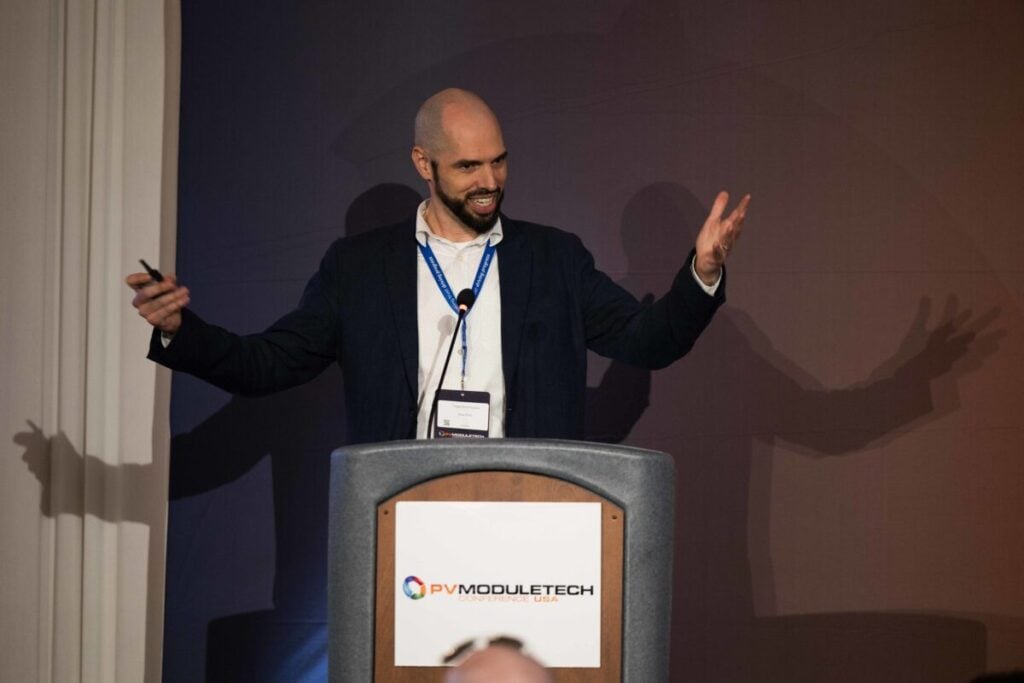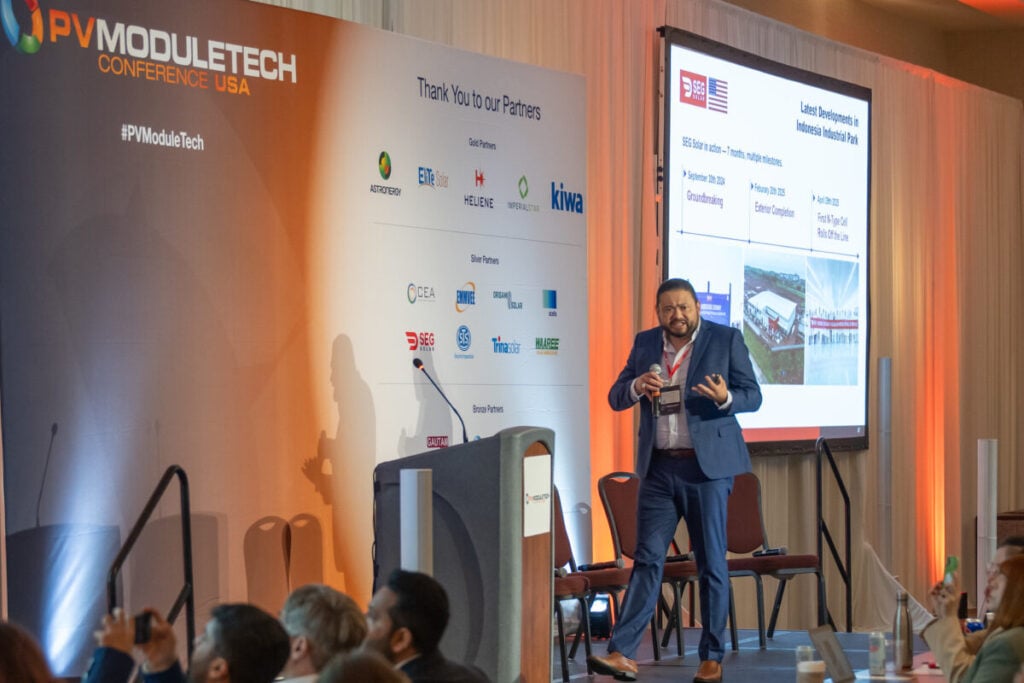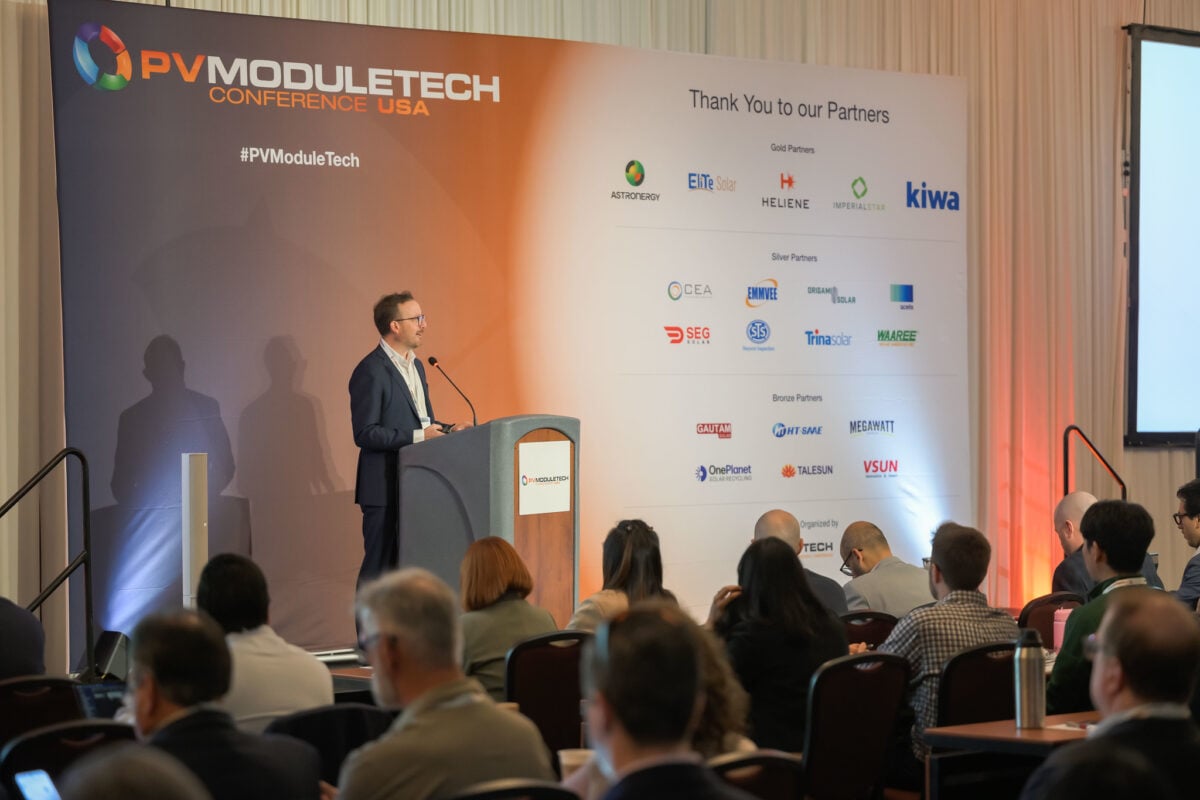A panel discussion, bringing together John Smirnow (Smirnow Law), Tom Beline (Cassidy Levy Kent), Nathan Picarsic (Horizon Advisory) and Angela Santos (Arent Fox Schiff), tackled the elephant in the room—the Senate Finance Committee reconciliation bill.
Changes from the initial bill put through the House include:
- ITC (Investment Tax Credit): A longer phase-out for ITC (100% in 2025, 60% in 2026 through to 0 in 2028) has been introduced. Developers will have 4 years from project start to completion to qualify for the ITC, requiring 5% of investment to be placed to count as a start. Transferability of credits has been restored.
- 45x Advanced Manufacturing Tax Credits: These credits have been altered and will no longer be stackable. This means that manufacturers must choose the wafer, cell or module as the product to which they apply the tax credit.
John Smirnow, in his capacity advising numerous stakeholders, including SEIA and a number of large organisations across the supply chain, notes that “losing the stacking of 45x credits is a big issue and is an issue to fight for.” He believes that, as it affects many other industries and goes against the spirit of the administration’s stated goals to increase domestic manufacturing, increased advocacy efforts are required to effect change.
Costs down, defects up
Kiwa PVEL’s Tristan Erion-Lorico noted that the drive to lower costs by decreasing materials costs is driving increased breakage rates in the field. Teresa Barnes of NREL noted that modules are getting “thinner and floppier” and are seeing increasing durability issues as module suppliers reduce materials costs to chase ever-shrinking or non-existent panel margins. This trend of PV module fragility was exemplified by the number of speakers discussing hail damage and hail impact.
 Kiwa PVEL’s VP of sales and marketing, Tristan Erion-Lorico, explores US qualification testing. Image: Solar Media.
Kiwa PVEL’s VP of sales and marketing, Tristan Erion-Lorico, explores US qualification testing. Image: Solar Media.
In the past five years, the industry has worked to reduce LID (Light-Induced Degradation); now, the key focus is on UVID (Ultraviolet-Induced Degradation). Paul Wormser of Clean Energy Associates highlighted the issues around UV LID and lamented the fact that many preventable defects are slipping back into cell and module production as throughput increases and pressures on the bill of materials increase.
Tariff mitigation and FEOC (Foreign Entity of Concern)
Angela Santos, Partner and Customs Practice Leader, Arent Fox Schiff, spoke in detail about the Tariff mitigation options her US clients have taken advantage of. She outlined a number of legal ways that module buyers in the USA could, by working with their supply chain, reduce tariff impacts by 10-30%.
Across the conference, there were numerous discussions about the nature of FEOC and how it will be applied to various components and materials for the solar supply chain in the USA. The confusion around which tariff applies to which material in the supply chain and in what sourcing percentage is making it difficult to accurately measure the impact. The industry is clearly struggling to get complete transparency on all the components sourced for its products.
US manufacturing: better together
This year’s conference saw many more US-based module manufacturers. CTOs, CEOs and Directors from Trina Solar, Waaree, SEG Solar, Imperial Star Solar, Heliene and Emvee presented and discussed the requirements for the growth of US manufacturing. They all spoke at length about the cooperation needed to rapidly build out the supply chain for components and materials in the US to increase module production with high levels of domestic content. A common thread across companies was that glass sourcing remained a significant bottleneck and that it is almost impossible to source glass exclusively from the US currently.
 Jim Wood, CEO of SEG Solar, weighs the suppliers set to dominate the US module market. Image: Solar Media.
Jim Wood, CEO of SEG Solar, weighs the suppliers set to dominate the US module market. Image: Solar Media.
Developers and developments
Companies purchasing large quantities of panels for deployment continue to place orders for projects covered under the recent moratorium, but are concerned about the prospects for future projects. Developers we spoke to highlighted the increase in co-located solar and storage projects across the USA and the huge energy demand being generated by the increase in data centres powering AI and crypto growth.
Over the past two days, the solar community gathered in Napa has addressed issues surrounding degrading product quality in a low-cost environment, margins, product differentiation and the need to remain on top of the industry’s evolving policy framework. What continued to resonate, both onstage and offstage over the two days, was a determination that this period will pass and that the businesses represented onsite, from developers to manufacturers, were continuing to build and deploy, fully prepared to weather the turmoil in the short term. The consensus from PV Module Tech USA was that the future for solar technology in the US was assured, despite the current political headwinds.
